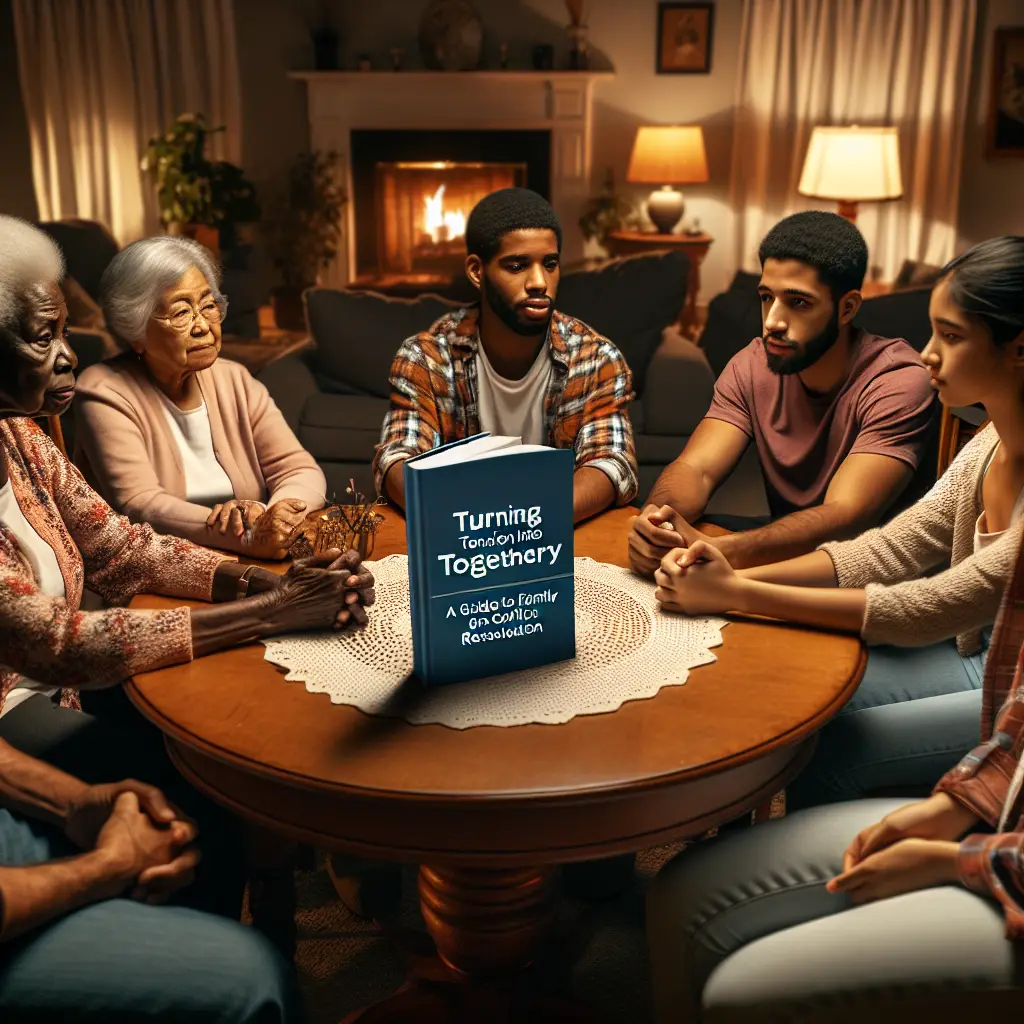
Turning Tension into Togetherness: An Essential Guide to Family Conflict Resolution
Introduction: The Power of Togetherness
Family conflict is an inevitable part of relationships, often stemming from miscommunication, differing values, or external pressures. While many dread these disagreements, they can serve as a catalyst for deeper understanding and stronger family bonds. In this guide, we explore the concept of Turning Tension into Togetherness: A Guide to Family Conflict Resolution—its principles, practices, and real-world applications. Conflict, when managed effectively, has the power to transform familial relationships, cultivating emotional resilience, respect, and connection.
The Importance of Conflict Resolution in Families
Every family experiences conflict; it’s part of being human. How we navigate these conflicts can define the health of our familial relationships. Understanding the dynamics of conflict resolution becomes essential, not just for maintaining harmony but for fostering growth and unity. The process of Turning Tension into Togetherness: A Guide to Family Conflict Resolution can lead families to greater emotional intelligence, allowing them to address issues head-on rather than shying away from them.
Understanding Family Conflict
What Causes Family Conflict?
Family conflicts often arise from various sources. Common triggers include:
- Communication breakdowns: Misunderstandings or lack of clear communication can escalate conflicts.
- Differing values and beliefs: Divergent perspectives on parenting, finances, or lifestyle choices can spark disagreements.
- Stressful external factors: Job loss, health issues, or financial strain can amplify tensions within a family unit.
Types of Family Conflict
Understanding the types of conflicts can pave the way for constructive resolutions:
- Interpersonal conflicts: Disputes between specific family members.
- Intrapersonal conflicts: Internal struggles affecting perceptions of family dynamics—including feelings of guilt or inadequacy.
- Systemic conflicts: Issues rooted in the family structure itself, such as favoritism or unhealthy dynamics.
Strategies for Resolution
1. Establish Open Communication
The cornerstone of effective conflict resolution is open communication. Families need to create a safe space for dialogue where feelings can be expressed without judgment.
- Active Listening: Encourage family members to practice active listening—acknowledging feelings and ensuring everyone feels heard.
- Use ‘I’ Statements: Frame concerns using "I feel" statements to prevent defensiveness—e.g., "I feel hurt when…"
2. Emphasize Empathy
Empathy can serve as a powerful tool for resolution. By placing themselves in each other’s shoes, family members can foster understanding and compassion.
- Case Study: The Rodriguez Family: After a heated argument over household responsibilities, the Rodriguez family decided to hold a family meeting. They prioritized empathy, each sharing their feelings on the division of labor. This shift allowed them to appreciate each other’s workloads, leading to a revised and fairer chore chart. The experience exemplified Turning Tension into Togetherness: A Guide to Family Conflict Resolution, reminding them to consider perspectives beyond their own.
3. Embrace Problem-Solving
Effective conflict resolution often includes collaborative problem-solving. Family members should work together to brainstorm solutions that address the core issues.
- Establish Common Ground: Identify shared interests and values to promote unity.
- Focus on Solutions, Not Blame: Redirect conversations from what went wrong to how it can be resolved.
4. Set Boundaries
Recognizing and setting healthy boundaries can prevent future conflicts.
- Identify Personal Limits: Encourage family members to articulate what behaviors or situations are unacceptable.
- Respect Others’ Boundaries: Create a culture that values individual boundaries and agreements.
5. Seek Professional Help
Sometimes, professional intervention is necessary to navigate deeply rooted conflicts.
- Family Therapy: A trained therapist can provide guidance on communication and relational dynamics.
- Mediation: This involves a neutral third party who can lead discussions, ensuring that all voices are heard and respected.
Navigating Challenges
While the principles of Turning Tension into Togetherness: A Guide to Family Conflict Resolution offer structured strategies, actual implementation can be challenging. Here’s how to face common challenges:
Resistance to Change
Families may struggle with entrenched habits. To address this, focus on:
- Gradual Implementation: Introduce new communication techniques slowly.
- Celebrating Small Wins: Acknowledging progress can motivate continued effort.
Emotional Triggers
Managing emotions amidst conflict is critical. To mitigate emotional triggers:
- Practice Self-Regulation: Teach family members calming techniques, such as deep breathing or taking a break.
- Acknowledge Emotions: Validating feelings can reduce escalation, showing others their emotions are recognized.
Charting Family Progress: Case Study Insights
Case Study: The Smith Family Reunion
The Smith family had a history of unresolved conflicts that surfaced during gatherings, leading to a divided family dynamic. They decided to hold a reunion focused on conflict resolution. Each member shared their perspective on past conflicts, utilizing tools from Turning Tension into Togetherness: A Guide to Family Conflict Resolution.
| Conflict Area | Resolution Strategy | Outcome |
|---|---|---|
| Money Management | Set a family budget | Unified financial goals |
| Parenting Styles | Share thoughts and concerns | Respect for diversity |
| Past Grievances | Open dialogue | Forgiveness and unity |
As a result, the reunion not only addressed existing issues but also set the stage for more cohesive family events in the future.
Conclusion: The Path Forward
Family conflicts may feel like daunting mountains to climb, but with the principles of Turning Tension into Togetherness: A Guide to Family Conflict Resolution, they can become areas of growth and connection. By establishing open communication, fostering empathy, embracing collaborative problem-solving, setting healthy boundaries, and being open to professional help, families can transform conflict into an opportunity for togetherness.
In every challenge lies the potential for understanding; embracing this journey is essential for building a resilient family dynamic. Remember, it’s not about avoiding conflict but rather gracefully navigating it. Lead with love, steer with empathy, and, most importantly, allow togetherness to shine through life’s tensions.
FAQs
1. What are some common causes of family conflict?
Family conflicts commonly stem from communication breakdowns, differing values, and external stressors like job loss or health issues.
2. How can I effectively communicate during conflicts?
Utilize active listening and "I" statements to express feelings without assigning blame, fostering a constructive dialogue.
3. When should I consider family therapy?
If conflicts are persistent or deeply rooted, seeking the guidance of a family therapist can be beneficial in navigating complex dynamics.
4. What if family members refuse to participate in resolution efforts?
Framing the discussion positively and emphasizing the benefits of resolution may encourage reluctant family members to engage.
5. How do I maintain boundaries in a conflicted family environment?
Clearly articulate personal limits while ensuring that others recognize and respect those boundaries to create a healthier environment.
Related Keywords for SEO Optimization
- Family conflict tips
- Resolving family disputes
- Family communication strategies
- Building emotional resilience in families
- Effective family meetings
By weaving these insights into your family interactions, you can embrace the transformative journey of Turning Tension into Togetherness: A Guide to Family Conflict Resolution, nurturing stronger relationships and a more constructive family environment.
















